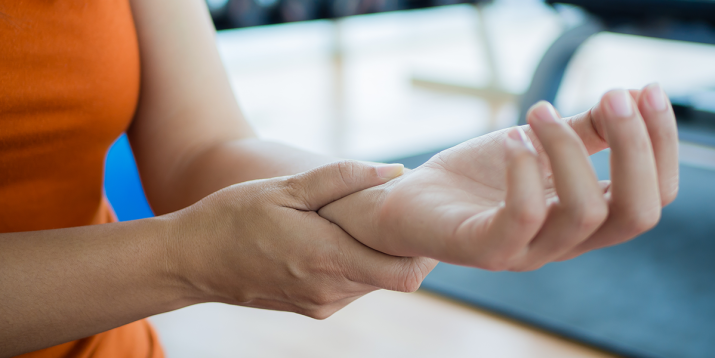Got Weak Wrists? Learn How to Modify Exercises

When it comes to exercise, our personal limitations can affect our results — and weak wrists are among the toughest to work around.
When you start looking at how many moves involve your wrists, from push-ups and dumbbell curls to planks and burpees, it can feel discouraging to try a new program.
Fortunately, there are ways to modify and strengthen weak wrists. The first step? Check with your doc.
“It can be difficult to tell on your own whether your wrist problems are muscular in nature or have more to do with tendons, ligaments, or even nerves that run through your wrist joints,” says ACE-certified personal trainer Mary Beth Rockwell, CPT, adding that being properly diagnosed to determine the root cause of any wrist discomfort is crucial.
That’s especially true if you have sore wrists during your workouts or your work day.
Once your doctor eliminates anything that’s not related to weak muscles and gives you clearance, you can safely start to modify moves and build your wrist strength.
Tips to Protect Weak Wrists
These five strategies can help you protect your wrists through modifications and new approaches.
1. Be strategic and always warm up
In most cases, you don’t have to eliminate all exercises that involve your wrists. You just need to be strategic, Rockwell advises.
Start by doing some hand stretches for a warm-up, then experiment with how your wrists feel in different positions.
2. Elevate your push-ups and planks
This is a way to take some of the load off weak wrists, Rockwell says. The higher your hands, the less body weight you’re supporting.
She suggests starting with your hands on a wall, then gradually working your way down to a countertop or the edge of a couch.
You’ll find your sweet spot where you can challenge yourself safely without tweaking your wrists.
3. Hold onto dumbbells
Another option for on-the-floor moves like the push-up is to perform them while gripping a pair of hex dumbbells.
In so doing, you’ll keep your wrists straight instead of bent, which will reduce the amount of stress placed on them.
Note: it’s important to use hex dumbbells, as the hexagon heads will help prevent rolling.
4. Play around with your hand position
Talk to your trainer or physical therapist about how small changes in your hand position might help. In Rockwell’s experience, sometimes a tiny tweak is all it takes.
“I have a history of tendinitis from overuse injuries,” says Rockwell. “After getting the proper diagnosis and doing physical therapy, I now do push-ups with my hands rotated slightly out to the sides with fingers spread wide and thumbs pointing forward. That’s a less acute angle for uncomfortable wrists.”
5. Focus on form with dumbbells
Our bodies love to cheat during tough exercises, as they attempt to find the easiest, lowest-effort way to work, according to Rockwell.
That doesn’t always translate to the safest way. If you have weak wrists, you may find yourself curling them during weighted exercises. Resist the temptation.
Rockwell suggests keeping your wrists straight through the entire range of motion.
If it’s difficult to do, consider wearing a brace until you’re able to strengthen your wrists more.
Ways to Strengthen Weak Wrists
While it’s important to modify moves for more wrist comfort, ultimately you want to strengthen them so you can do more activities. Rockwell offers up these tips:
Tip 1. Grab a rubber “stress ball” and do some gentle squeezes to work your forearms and hand muscles.
Tip 2. Grab a light dumbbell or resistance band and perform wrist curls.
- Take a seat and place your forearm on your thigh with your palms up.
- Raise the weight or band by bending only your wrist to work the muscles on the bottom of your forearm (i.e., your wrist flexors).
- Pause, then lower the weight.
- Do 10 reps, turn your arm over (palm down) and repeat to work the muscles on the top of your forearm (i.e., your wrist extensors).
- Repeat with your other arm. That’s one set. Do three.


